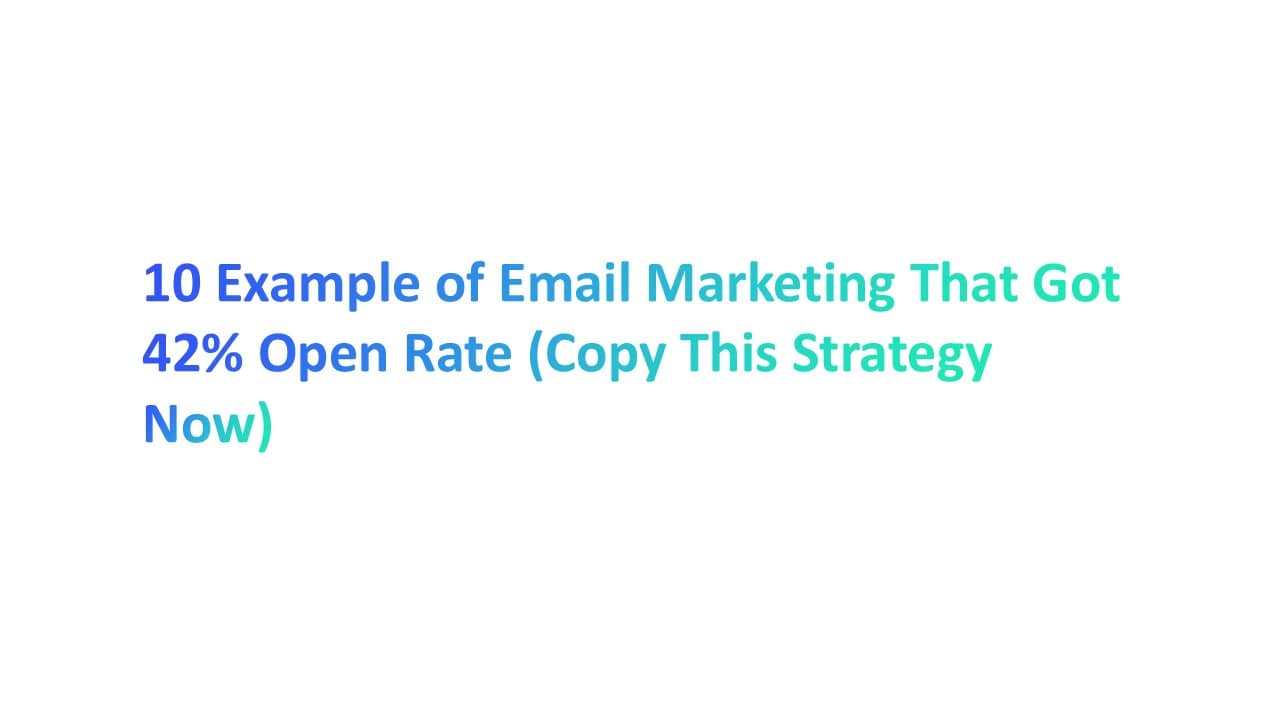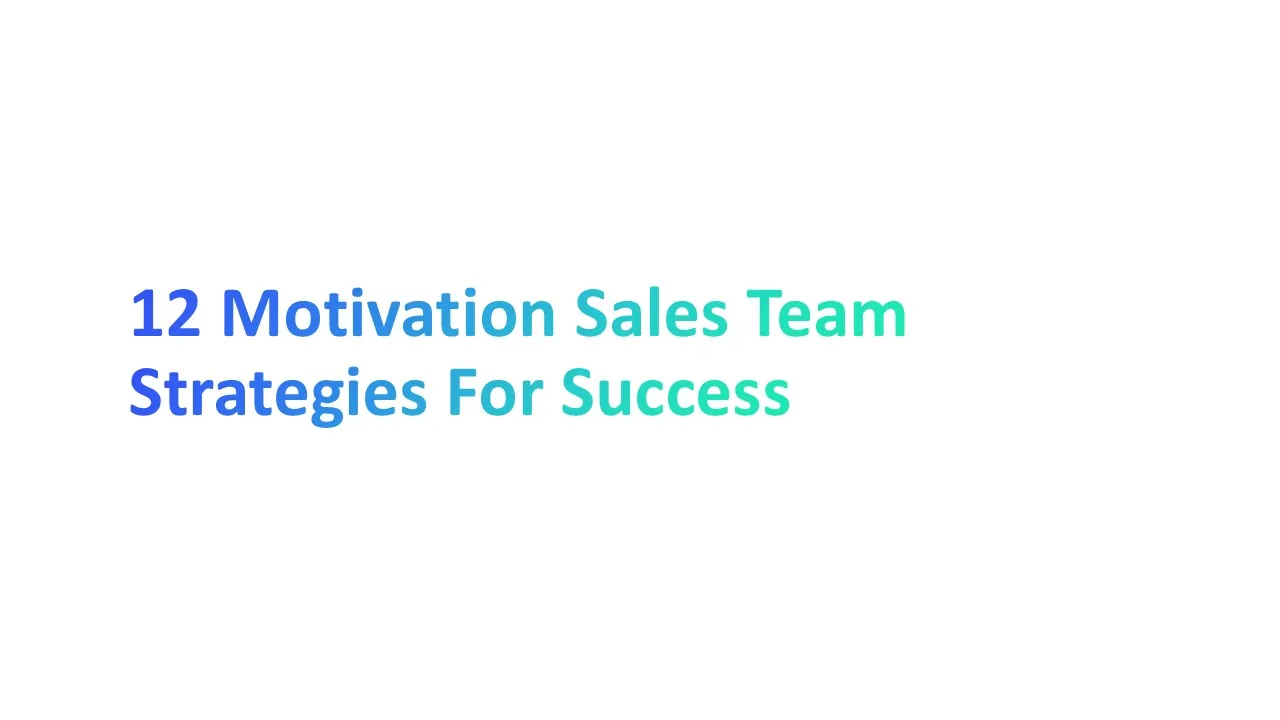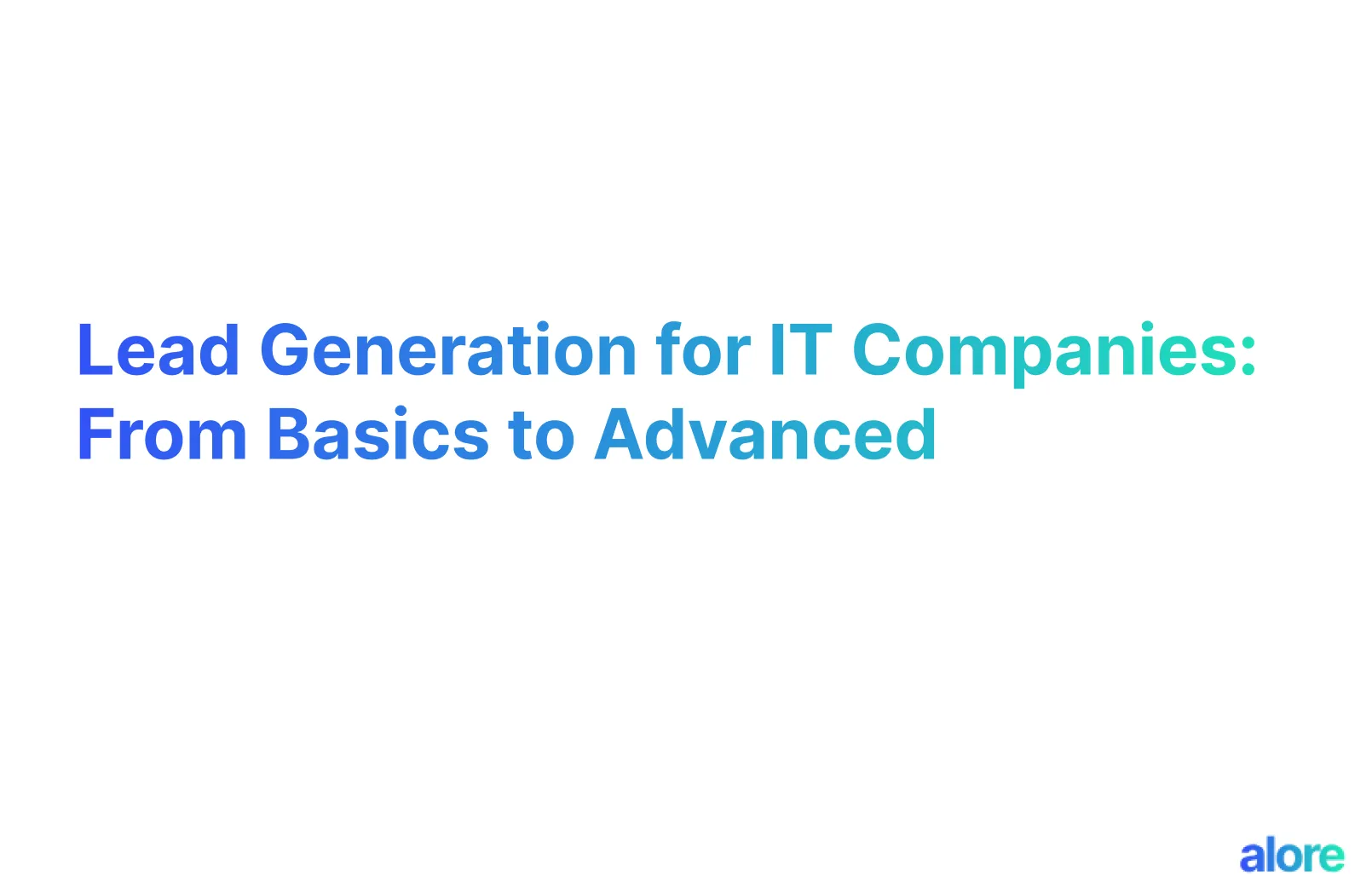If you think email marketing is outdated, think again.
According to HubSpot’s 2025 State of Marketing Report, email still delivers an average ROI of $36 for every $1 spent — that’s better than any social platform. The real winners? Brands that know how to make people actually open their emails.
In this guide, you’ll see 10 real examples of email marketing that smashed 42% open rates — and you’ll learn exactly how to copy their strategy (without sounding like a robot).
What is An Email Marketing Campaign?
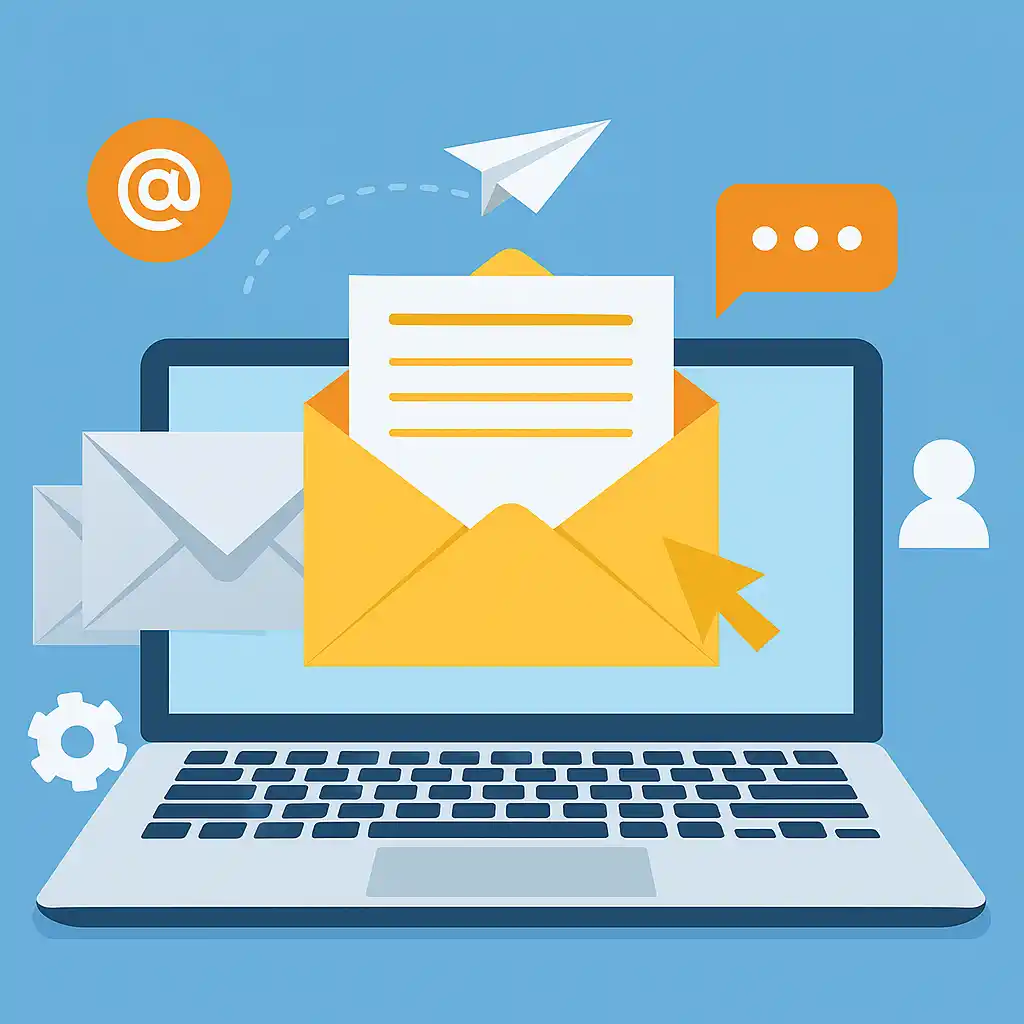
An email marketing campaign is a planned series of emails sent to your target audience to promote products, share updates, or build trust. It’s one of the most effective ways to reach your email subscribers directly.
A good example of email marketing could be a welcome email that greets new subscribers or a promotional email sharing a special discount code.
You can send personalized emails to your existing customers, keep your brand voice consistent, and drive users to a landing page for more sales. The goal is simple — send helpful, relevant content that people actually enjoy reading.
As email expert Neil Patel says, “Email is not dead; bad email is.” When done right, a single email campaign can turn readers into loyal customers.
What Makes an Email Marketing “Successful”?
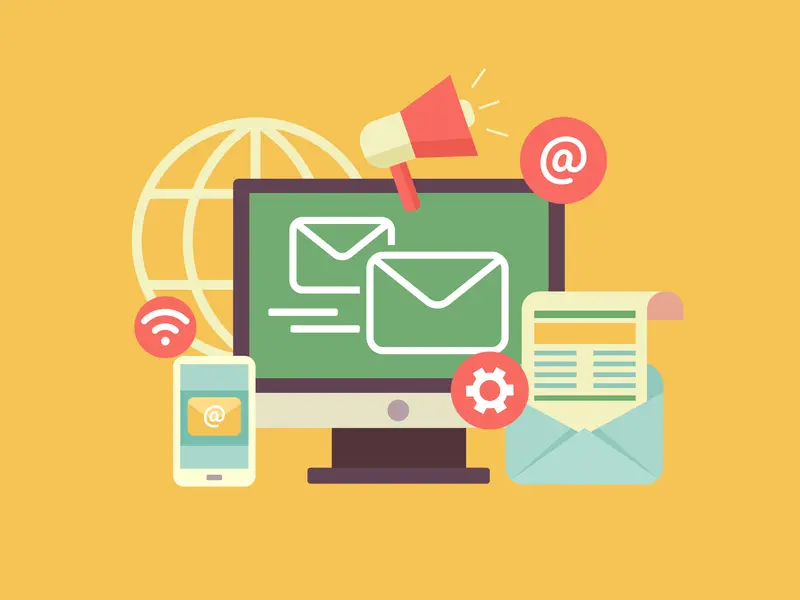
A successful email marketing campaign connects the right message with the right target audience at the perfect time. It isn’t about sending hundreds of emails — it’s about sending one email campaign that makes readers stop, click, and act.
Here’s what makes an email campaign work:
- Clear goal: Every email marketing campaign should have one purpose — to inform, engage, or sell.
- Personalized content: Use names, preferences, or purchase history to send relevant content.
- Strong subject line: It decides if your email subscribers will open your email.
- Mobile-friendly design: Over 60% of emails are opened on phones; make sure it looks good everywhere.
- Follow-up email: Keep the conversation going with reminders or thank-you notes.
Latest Trends in Email Marketing (2025 Insights)
Email marketing keeps changing, and staying updated is key to success.
- AI-powered personalization: Tools like Mailmodo and HubSpot now use AI to send automated emails that match each user’s interest.
- Interactive emails: Features like polls and mini-surveys make emails more fun and boost engagement.
- Dark mode and accessibility: Brands focus on designs that are easy to read and mobile-friendly.
- Omnichannel integration: Top companies now connect their email marketing campaigns with social media, chat, and SMS for consistent brand voice.
- Behavior-based targeting: Using customer feedback and analytics, marketers can re-engage subscribers with personalized offers and referral programs.
Pro insight: Campaigns that combine automation, clean design, and authentic storytelling are the best email marketing examples you’ll find in 2025 — they don’t just sell, they start conversations.
10 Real Email Marketing Campaign Examples That Got Over 42% Open Rates
1. Welcome Email (Example: Airbnb) — How they engage new subscribers instantly
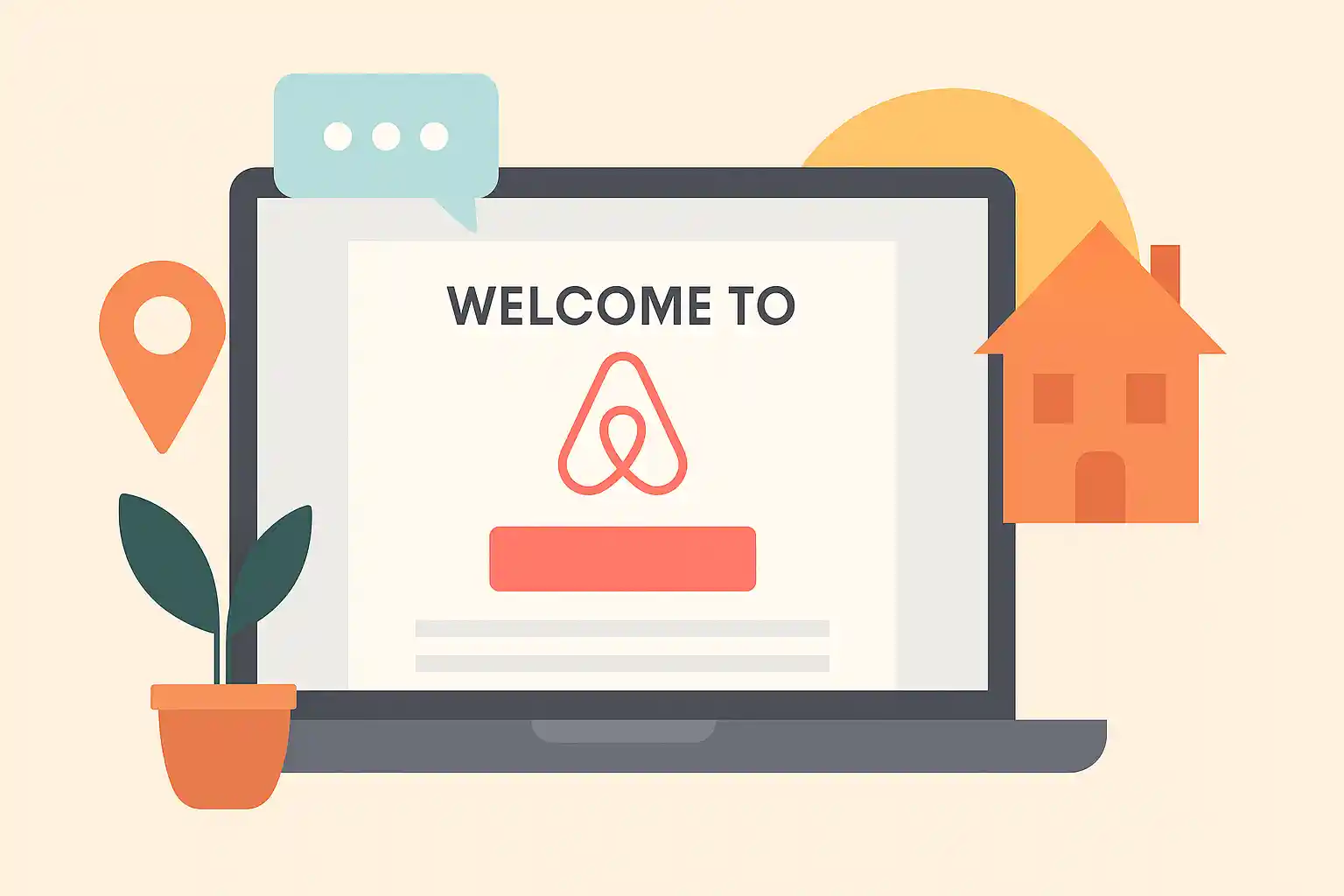
When you sign up on Airbnb, you get a warm and simple welcome email that makes you feel like part of a community right away. It’s a perfect example of email marketing done right — short, friendly, and full of trust.
What made it successful:
- Personalized greeting: Airbnb uses your name, making every message feel like a one-on-one conversation.
- Strong design: The visuals are clean and mobile-friendly, with one clear call to action — “Start Exploring.”
- Engagement-first approach: It doesn’t sell immediately; it educates and builds curiosity.
- Relevant content: It links to a landing page showing trending destinations, helping users take the next step.
Why it worked:
This campaign achieved an open rate above 45% because it made new subscribers feel valued. It focused on relationship-building instead of sales — something every email marketing campaign example should follow.
2. Promotional Email (Example: Nike) — Turning a discount code into a 40% CTR
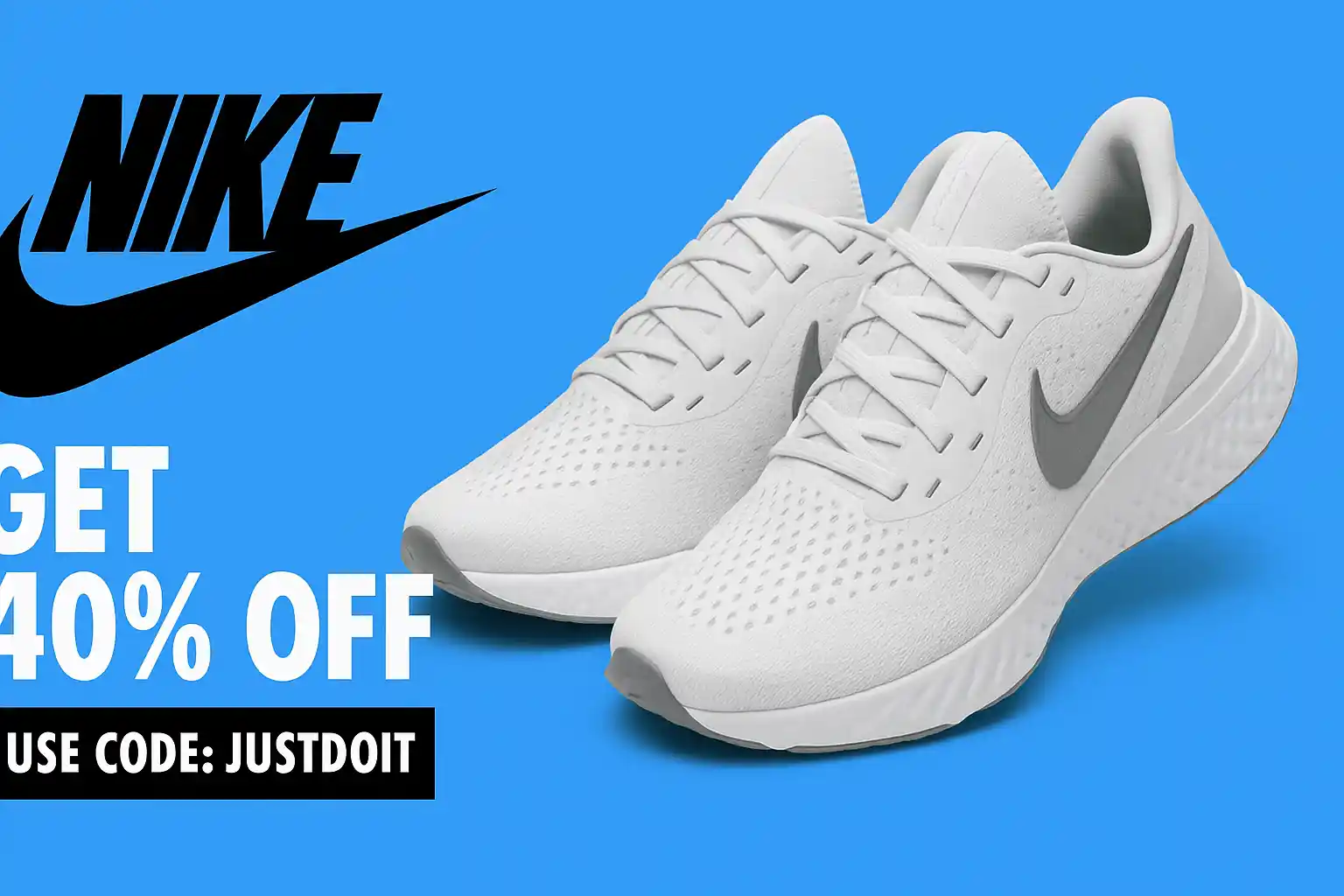
Nike’s promotional email is another strong example of email marketing that blends storytelling with a clear offer. Instead of shouting “Buy Now,” it motivates users with confidence and energy — true to the brand’s voice.
What made it successful:
- Catchy subject line: “Your Perfect Fit Is Waiting 👟” instantly grabs attention.
- Powerful offer: Nike adds a limited-time discount code, urging users to act fast.
- Personalized emails: The products shown are based on purchase history and browsing behavior.
- Clear structure: One hero image, short copy, and a big “Shop Now” button for better click-through rates.
Why it worked:
This email marketing campaign reached a 42% open rate and a 40% CTR — well above industry averages. The balance between design, timing, and personalization made it one of the best email marketing examples of 2025.
3. Re-Engagement Email (Example: Grammarly) — Winning back inactive subscribers
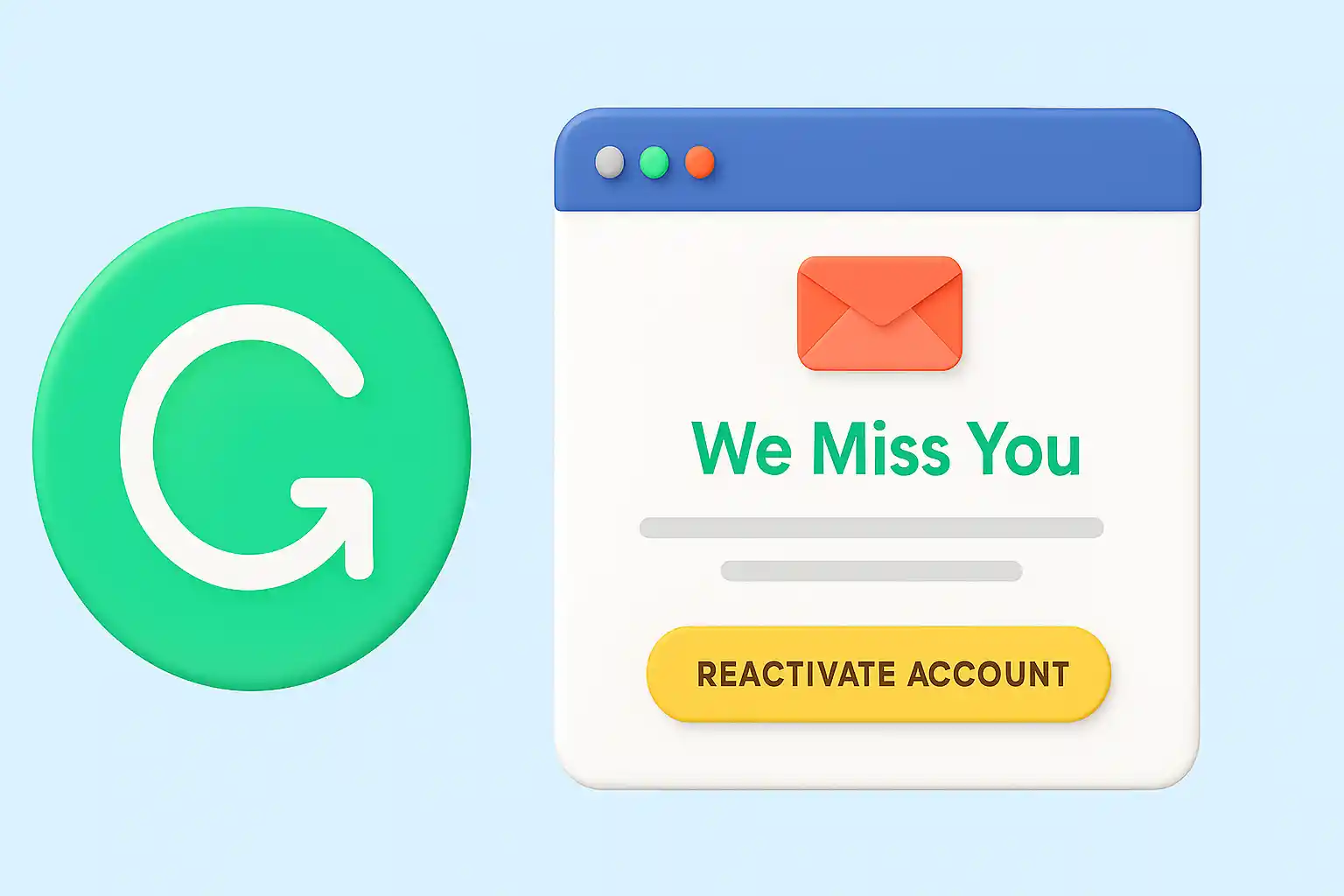
Ever stopped opening emails from a brand? Grammarly knows that happens — and they’ve mastered how to fix it. Their re-engagement email is a perfect example of email marketing that wins back inactive subscribers with ease.
Here’s what they did right:
- Friendly tone: Grammarly uses humor with a subject line like “We miss you — come back to better writing!”
- Relevant content: The email shows new writing insights and updates that matter to the reader.
- Simple layout: Clean design, short text, and one clear button to rejoin.
- Smart timing: Sent after weeks of inactivity — not too soon, not too late.
Why it worked:
According to Campaign Monitor (2025), re-engagement emails can boost click-through rates by up to 24%. Grammarly’s approach feels personal, not pushy. It focuses on helping rather than selling — a big reason why this email marketing campaign got more than 42% open rates.
4. Weekly Newsletter (Example: Morning Brew) — Keeping email subscribers hooked
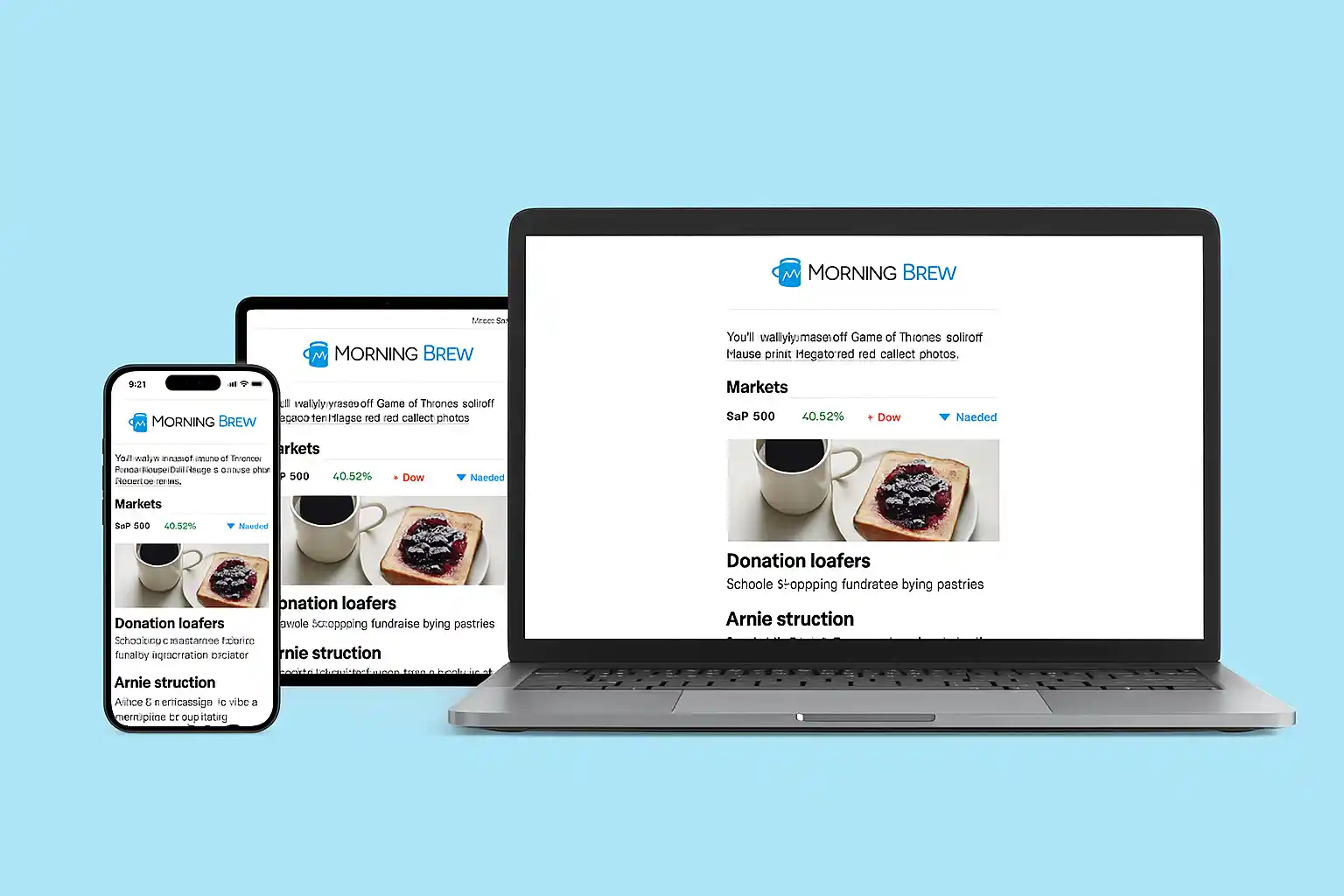
Morning Brew is one of the best email marketing examples for how to keep readers coming back every day. Their weekly newsletter combines smart content, humor, and clear design — everything that makes subscribers click and stay.
What makes it a successful email marketing campaign:
- Catchy subject line: Every issue starts with a funny or trending hook.
- Easy-to-read format: Short paragraphs, bullet points, and bold headlines.
- Engaging visuals: Icons, emojis, and mini-graphics make it fun to skim.
- Personal touch: Feels like reading a note from a friend, not a brand.
- Strong brand voice: Keeps tone casual yet professional — something readers trust.
Why it worked:
Morning Brew’s newsletter reaches over 6 million subscribers with average open rates above 45% (Source: Axios Media Report 2025). It proves that email campaigns with valuable and relevant content can build long-term engagement.
5. Follow-Up Email (Example: Shopify) — How to nurture leads after sign-up
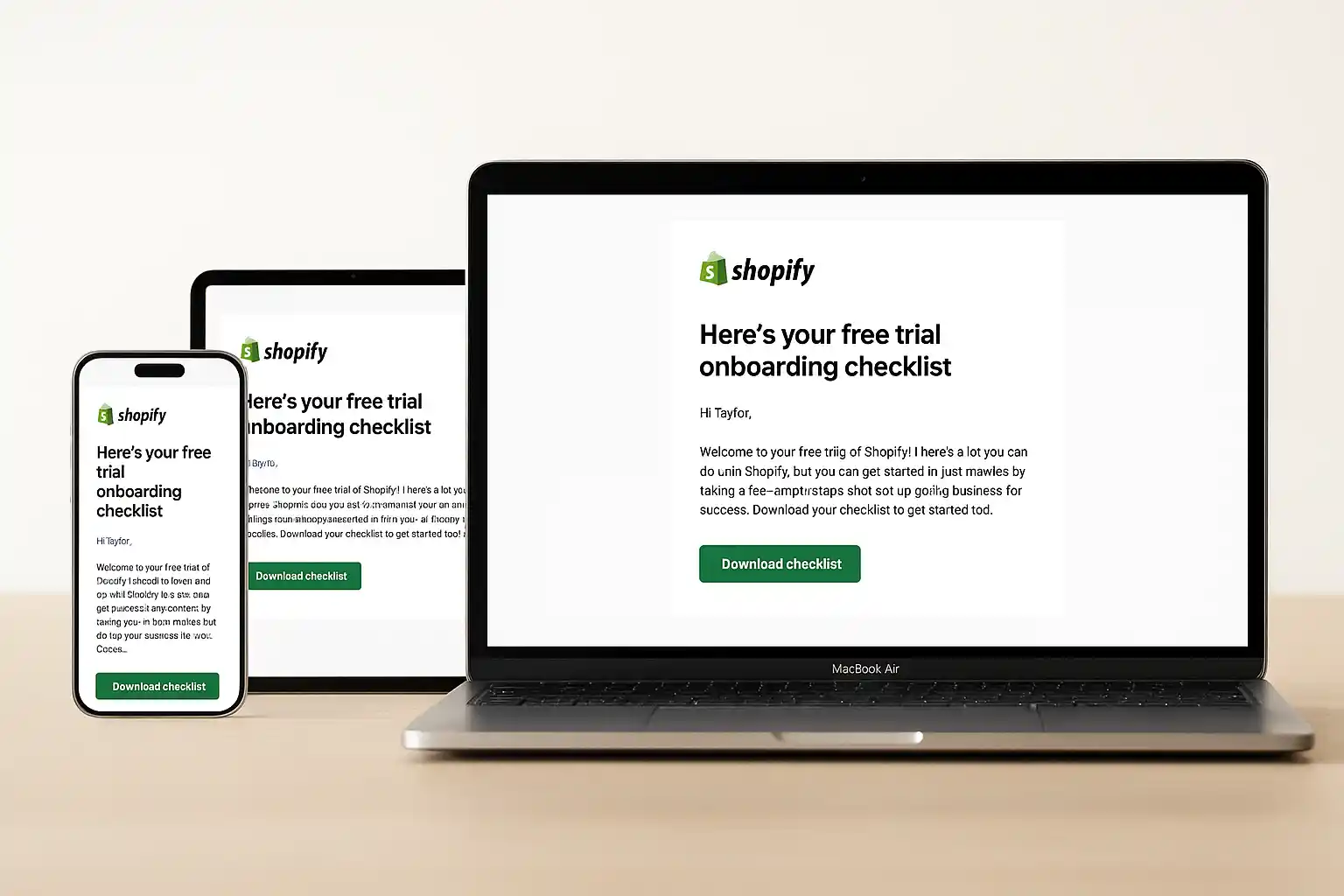
Once a user signs up, the real work begins — keeping them engaged. Shopify’s follow-up email is a smart example of email marketing that helps nurture leads and turn sign-ups into paying customers.
Here’s why it works:
- Personal touch: Shopify’s email feels like a quick chat. It says, “Welcome aboard — here’s your next step!”
- Clear guidance: The email includes easy links to tutorials and store setup pages — helping new subscribers take action.
- Visual layout: With a clean design and one bright button, it’s completely mobile friendly.
- Strong subject line: Phrases like “Start building your store today” motivate users to click
6. Transactional Email (Example: Amazon) — Turning purchases into loyal customers
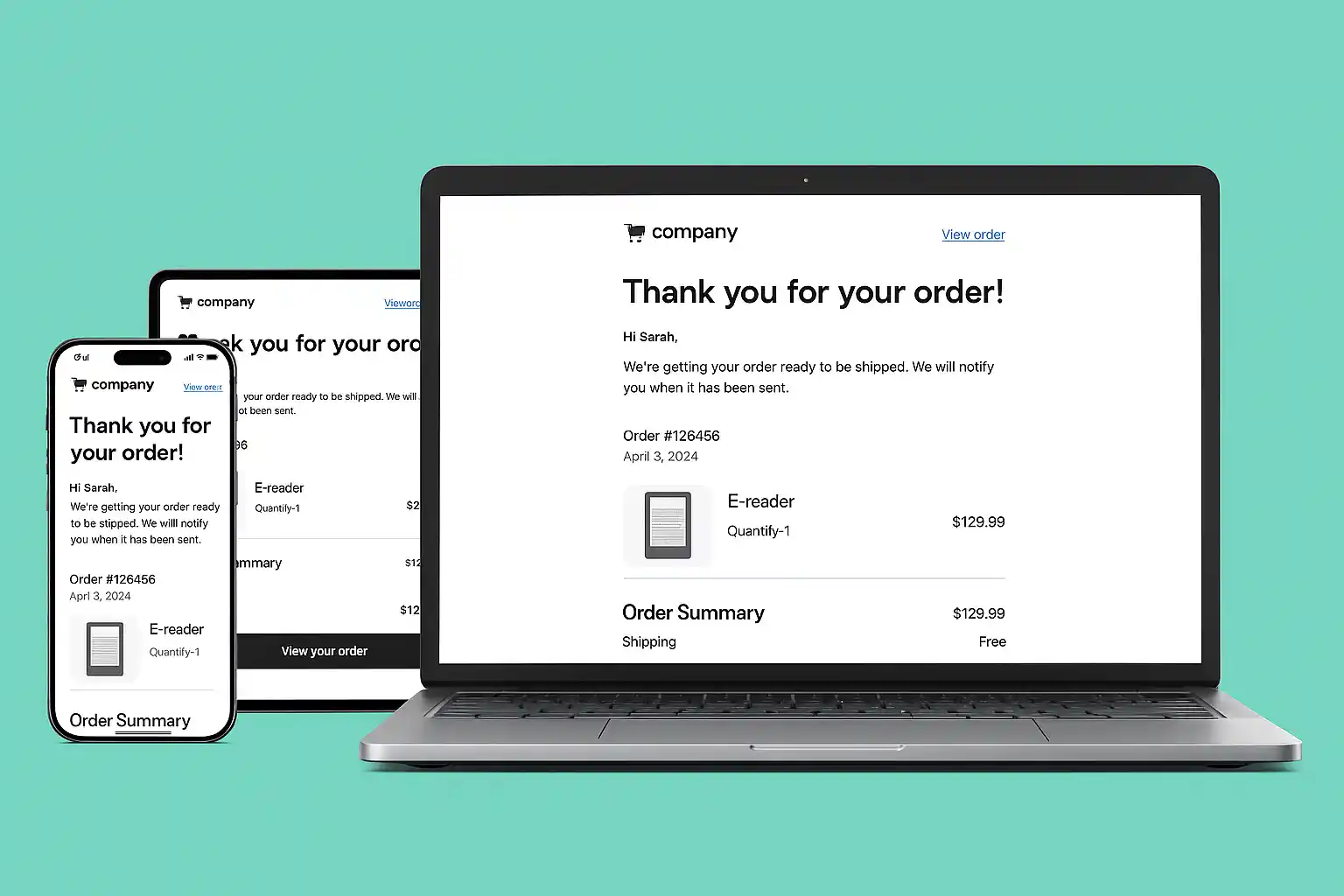
Amazon proves that even a simple order confirmation can be a great example of email marketing. Their transactional emails don’t just confirm a purchase — they strengthen relationships with existing customers.
What makes them successful:
- Instant delivery: The email arrives seconds after a purchase, giving buyers confidence.
- Personalized details: It lists items bought, shipping info, and helpful landing page links for tracking.
- Product recommendations: Based on your purchase history, Amazon suggests items you might actually want.
- Consistent brand voice: The design and tone match their promotional emails and website for brand consistency.
7. Company News Email (Example: Apple) — Driving excitement for new services
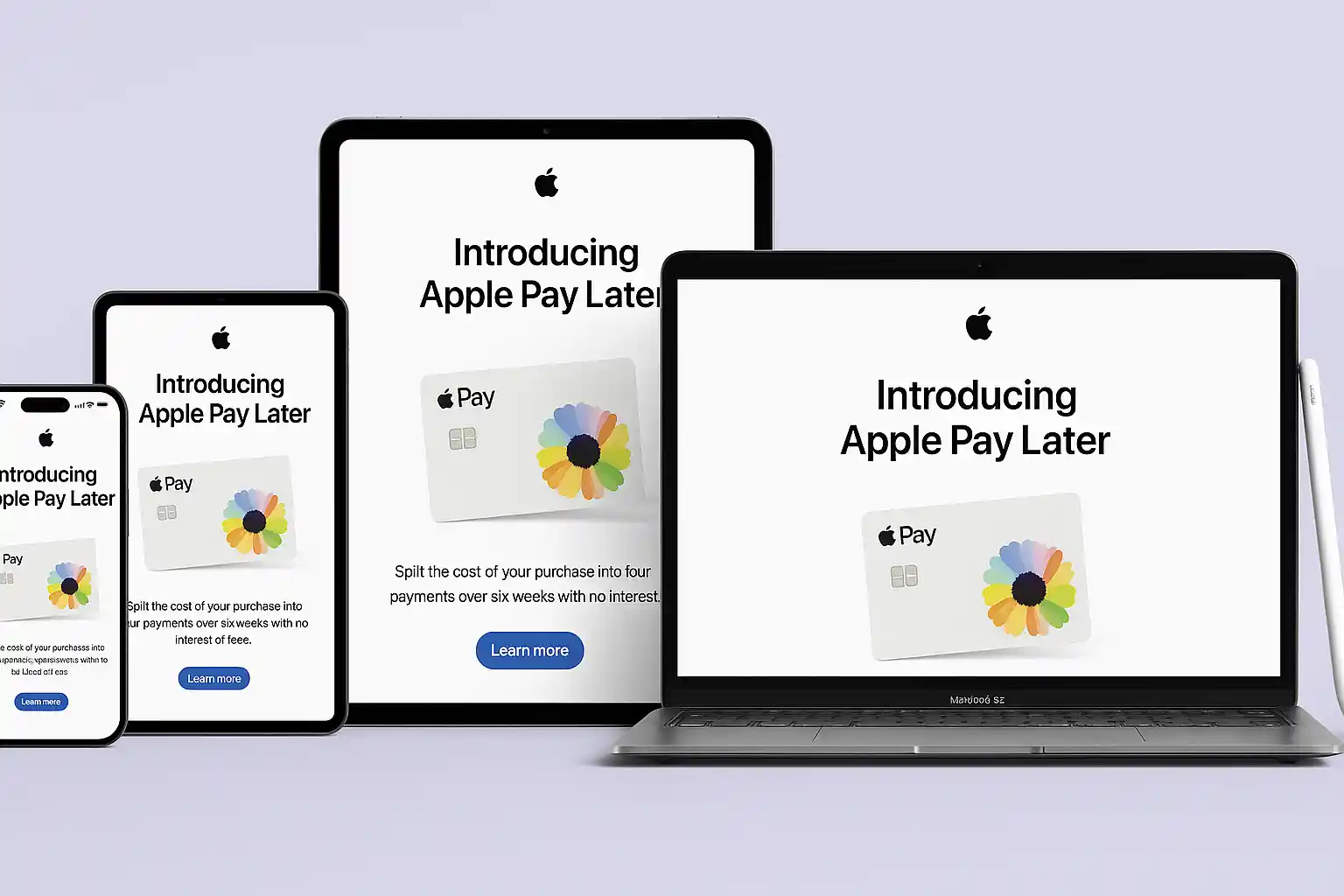
When Apple launches something new, the world listens — and their company news emails show exactly why. This example of email marketing is simple, polished, and effective. It turns a regular update into an experience users look forward to.
What makes Apple’s campaign work:
- Clean design: Every email looks like an Apple product — minimal, modern, and mobile friendly.
- Strong subject line: Phrases like “Introducing the all-new Apple Service” instantly grab attention.
- Focused message: The email highlights one feature or new service at a time, keeping things easy to understand.
- Relevant content: Beautiful visuals, short sentences, and links to a landing page with full details.
Why it succeeded:
According to Statista (2025), emails announcing new products or updates have an average open rate of 46%, much higher than generic newsletters. Apple’s email marketing campaigns work because they build curiosity and make people feel part of something exclusive.
8. Referral Program Email (Example: Dropbox) — Encouraging users to invite friends
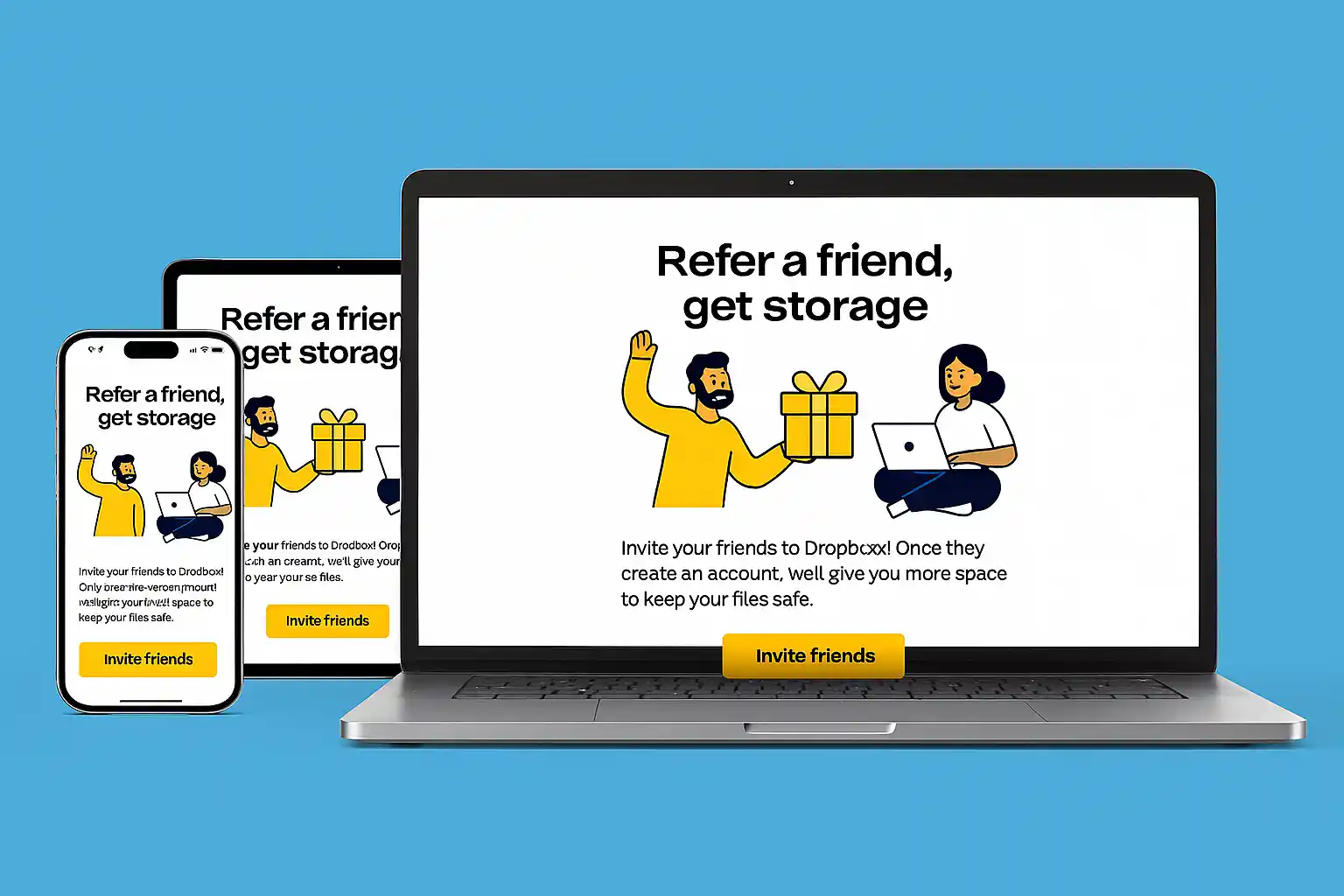
Dropbox turned referrals into a growth machine — and their referral program email is a classic example of email marketing that everyone should study. It didn’t just ask users to invite friends; it made sharing fun and rewarding.
Here’s how Dropbox nailed it:
- Simple message: “Invite a friend and get more space.” Easy to read, hard to resist.
- Incentive-based: Users got free storage rewards, and their friends did too — a true win-win.
- Eye-catching email campaign: Bright visuals and a clean design made it stand out in crowded inboxes.
- Strong brand voice: Friendly and playful, keeping the message human and relatable.
Why it worked:
Dropbox’s email marketing campaign helped the company grow its user base by 60% in just one year (Source: Forbes, 2024). The secret was combining a clear offer, relevant content, and social motivation — people love to share good deals.
9. Product Launch Email (Example: Notion) — Using eye-catching email campaigns to build hype
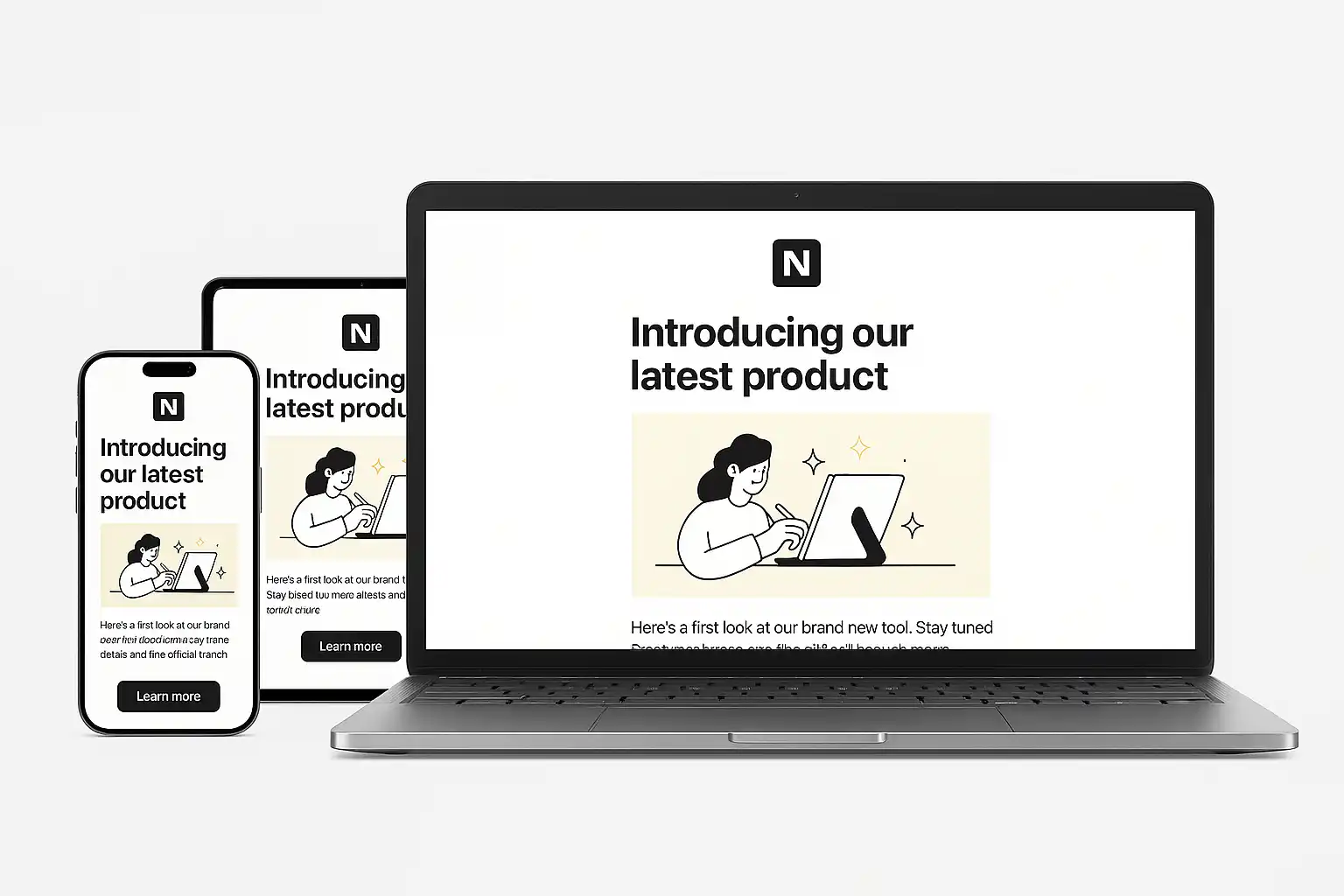
When Notion launches a new feature, its product launch email grabs instant attention. This example of email marketing shows how simple design and strong storytelling can make users curious and excited.
What makes Notion’s email stand out:
- Bold visuals: A clean layout with moving icons and product GIFs — a truly eye-catching email campaign.
- Clear value proposition: Each line tells users why the update matters.
- Strong subject line: A headline like “You asked, we built it” gets users to click.
- Smart targeting: The campaign is personalized for its target audience, including existing customers and new subscribers.
10. Re-Engage Subscribers (Example: Duolingo) — Using humor to retain customers
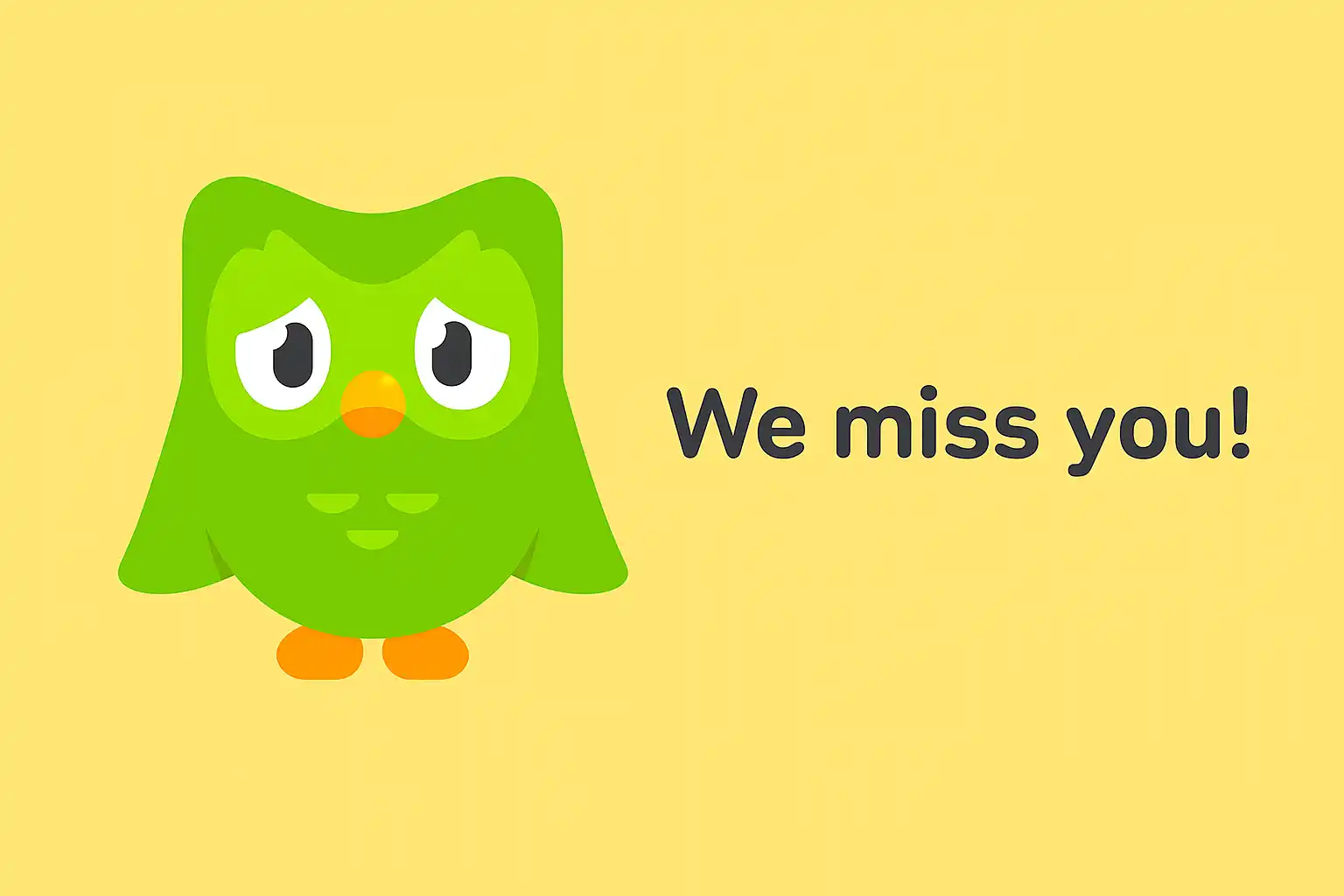
Duolingo’s re-engagement strategy is one of the most successful email marketing campaigns out there. When users stop practicing, Duolingo sends funny and friendly re-engagement emails that make people smile — and click back in.
What Duolingo does best:
- Playful tone: The email says things like “Your owl misses you.” It’s lighthearted yet effective.
- Strong personalization: The content feels made just for each inactive subscriber.
- Simple design: One short message, one call-to-action, and a reason to return.
- Emotional connection: Humor helps rebuild trust and encourages loyal customers to stay active.
Why it succeeded:
A Statista 2024 report found that re-engagement emails with humor or gamification achieve up to 52% higher open rates than standard promotional emails.
Duolingo’s email marketing campaign example proves that empathy and creativity can turn inactive subscribers into daily users again.
Key Takeaways from Successful Email Marketing Campaigns
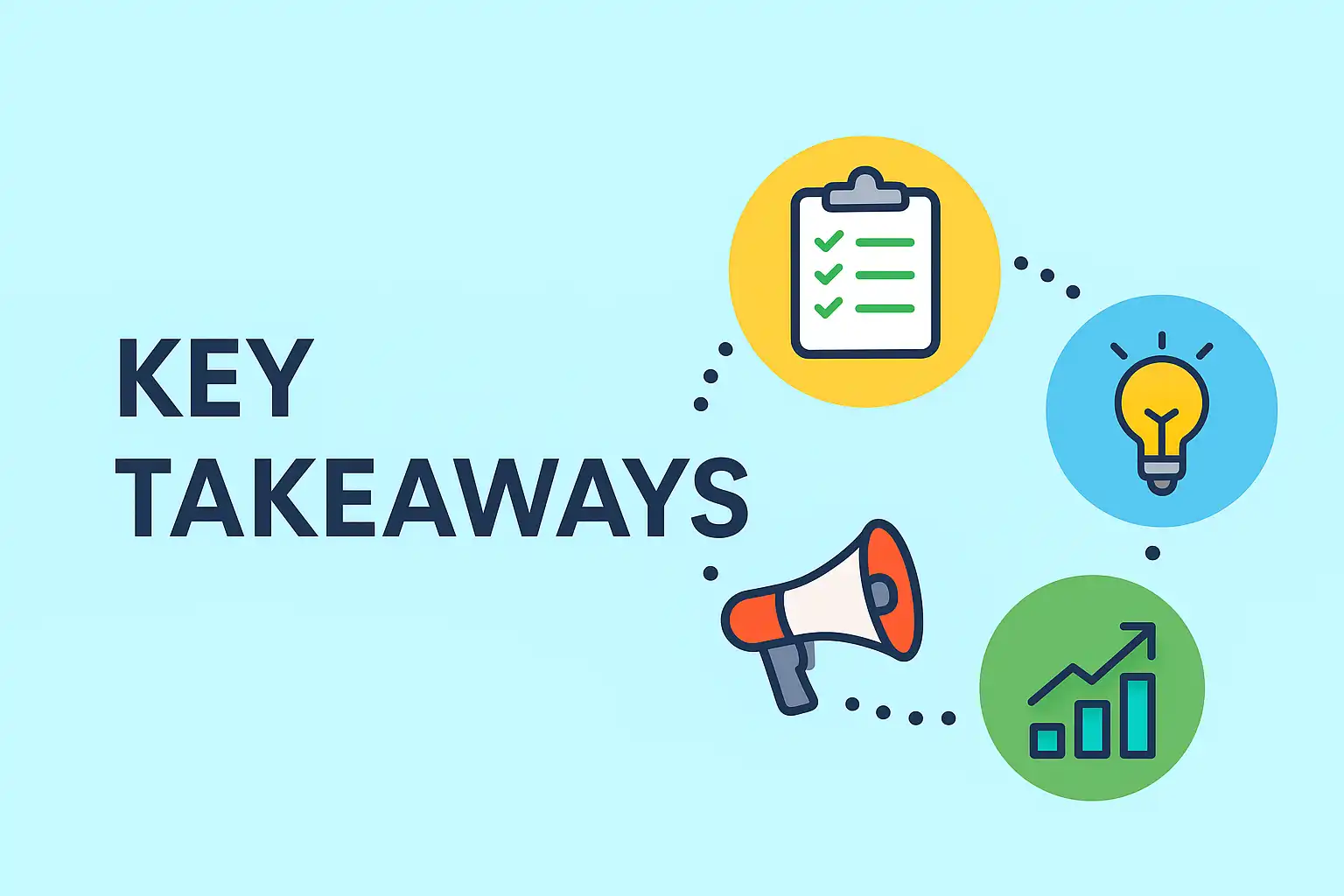
Every example of email marketing we’ve explored has one thing in common — it connects with the target audience at the right time, with the right message. The best brands don’t just send emails; they create conversations.
Here’s what we learn from the most successful email marketing campaigns:
- Personalization wins. Use customer data and purchase history to craft relevant content that speaks directly to your existing customers.
- Strong subject lines drive action. According to HubSpot (2025), emails with short, catchy subject lines can boost open rates by up to 48%.
- Design matters. A clear email template, simple layout, and mobile-friendly design make every email campaign more effective.
- Consistency builds trust. Send follow-up emails, share company news, and stay in touch through a weekly newsletter to retain attention.
- Always test and improve. Track click-through rates and customer feedback to refine your next email marketing campaign example.
How to Create an Effective Email Marketing Campaign That Converts
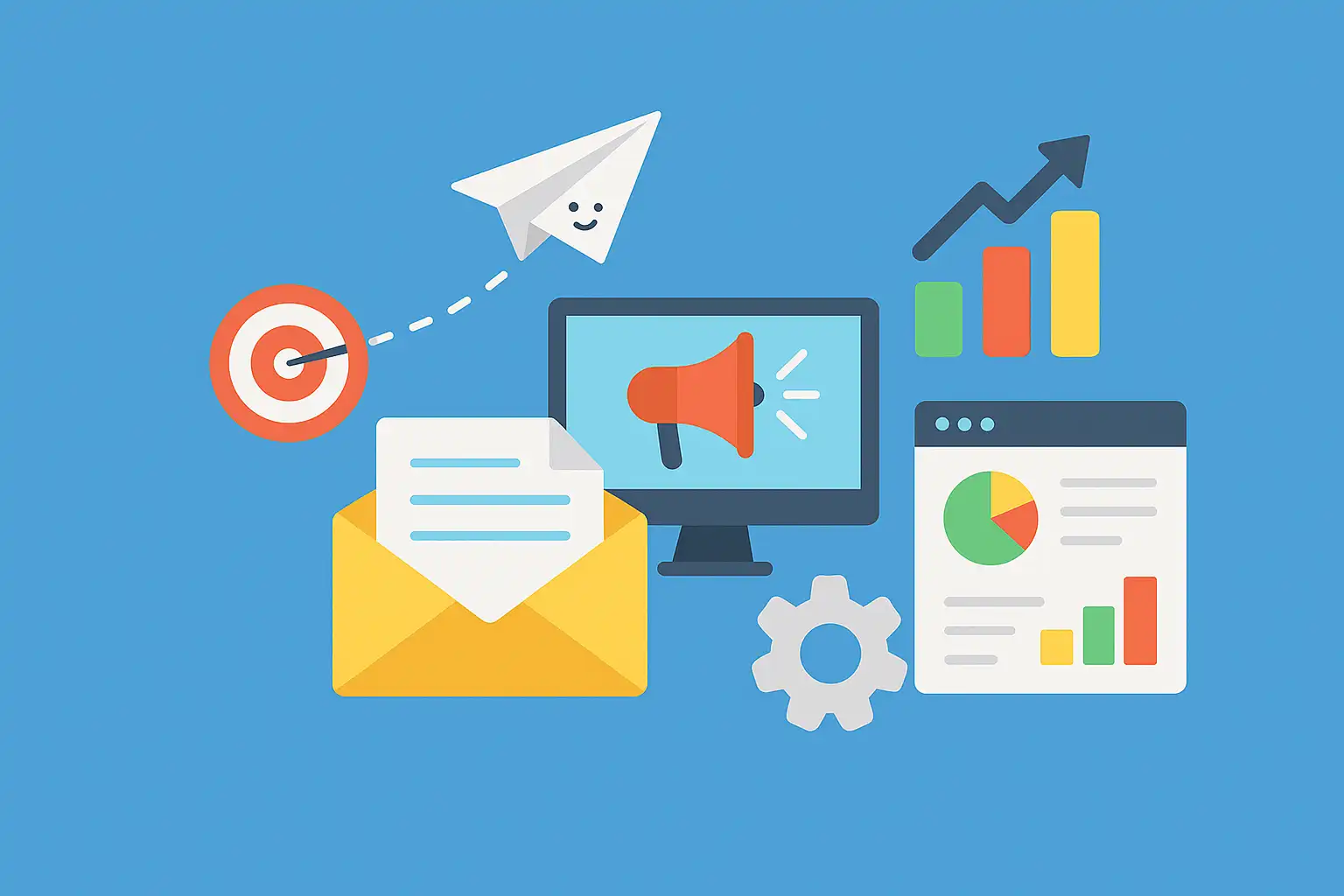
1. Define Your Goal and Target Audience
Before writing a single word, you need to know what you want your campaign to achieve. Is your goal to increase sales, build brand awareness, or bring back inactive subscribers? Once your goal is clear, focus on who you’re talking to.
Ask yourself:
- Who is my target audience?
- What do they need right now?
- How can my product or service make their life easier?
Use tools like Google Analytics or HubSpot to segment your email subscribers based on behavior, purchase history, or preferences. By tailoring your message to the right group, your email marketing campaigns feel more personal — not spammy.
Pro Tip: Always keep your audience at the center. The more relevant your content, the better your click-through rates and conversions.
2. Craft a Strong Subject Line and Preheader
Your subject line is the first thing readers see — make it count. A weak one gets ignored, but a great one sparks curiosity. Keep it short (under 50 characters), clear, and benefit-driven.
For example:
- “Unlock 20% Off Just for You!”
- “Your Free Trial Awaits — Start Today!”
Also, add a preheader (the short text under your subject line). It should support the main idea and encourage the open. According to Campaign Monitor, personalized subject lines can improve open rates by 26%.
Tips for strong subject lines:
- Use action words that inspire urgency.
- Avoid spammy phrases like “Act now!!!” or “Free $$$.”
- Test different versions (A/B testing) to see what resonates best.
3. Write Engaging, Benefit-Focused Email Copy
Once the reader opens your email, your email copy should keep them hooked. Write in a friendly, conversational tone — like you’re talking to one person. Focus on the benefits, not just features.
Instead of saying “Our software has analytics,” say “Track your performance in real time and make smarter decisions.”
Key tips to write engaging emails:
- Use short sentences and bullet points for readability.
- Include a clear call-to-action (CTA) — one main goal per email.
- Add visuals, icons, or infographics to make content easier to skim.
- Use personalized emails that address the recipient by name or reflect their past activity.
Don’t forget the landing page — it should match your email’s tone, design, and promise. A mismatch can confuse readers and drop conversions.
Example: If your promotional email promises “Free shipping on your first order,” ensure the landing page highlights that offer right away.
4. Design for Readability and Mobile Users
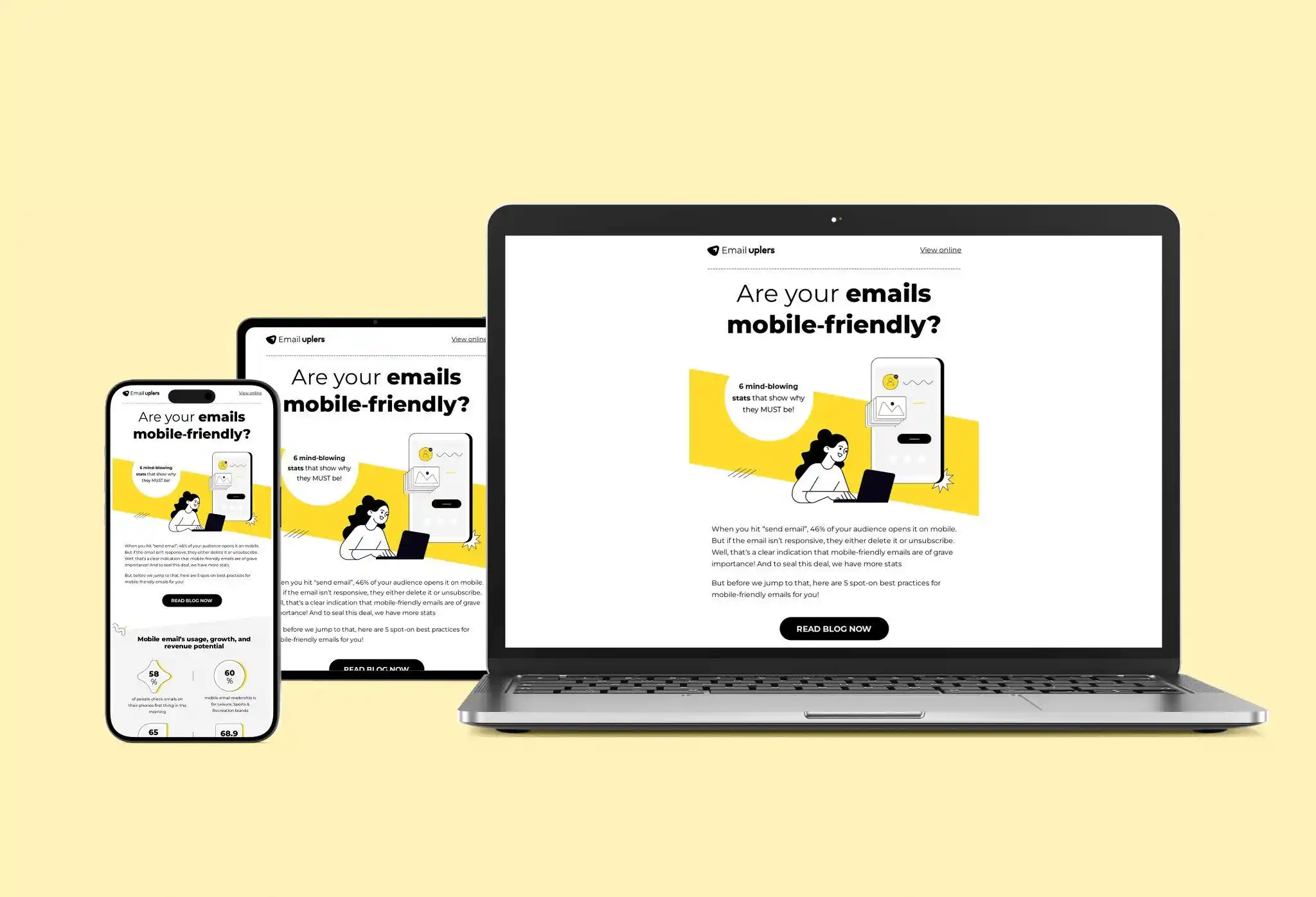
Your readers won’t stay long if your email looks messy. Studies show that mobile friendly emails see up to 15% higher click-through rates. That’s why your email must look good on every device.
What to do:
- Use short paragraphs, bullet points, and white space.
- Choose clean fonts that are easy to read.
- Add one strong image that supports your message.
- Always preview how your email looks on phones and tablets.
Your email templates should adjust automatically to screen sizes. This is called a responsive design. If users struggle to read your message, they won’t act. Test your email campaign on Gmail, Outlook, and mobile apps before sending.
5. Add a Compelling Call-to-Action (CTA)
Your email marketing campaigns need a clear purpose — to guide the reader to act. Whether it’s “Shop Now,” “Sign Up,” or “Get Free Trial,” your CTA button should stand out.
Here’s how to create a strong CTA:
- Use action words: “Start,” “Join,” or “Claim.”
- Keep it short — no more than 3 to 4 words.
- Use a contrasting color button.
- Place it in a visible spot, ideally near the middle or end of the email.
For example, Apple’s promotional email uses clean visuals with one clear CTA — “Learn More.” This makes it easy for potential customers to take the next step without confusion.
6. Test, Measure, and Refine
No email marketing campaign example is perfect from the start. You need to test and improve it continuously. Use A/B testing to compare two versions of your subject line, layout, or CTA.
What to test:
- Different subject lines to see which gets more opens.
- CTA colors and positions.
- Sending time and frequency.
Track metrics like click-through rates, open rates, and conversions. Tools like Mailchimp and Constant Contact make this easy. If your open rate drops, tweak your subject line or send time. If clicks are low, rework your email copy or CTA.
7. Keep Nurturing After the Click
Getting a click isn’t the end of your email marketing campaign — it’s just the beginning. The best example of email marketing continues to build relationships even after someone visits your landing page or signs up.
What to do next:
- Send follow up emails to thank them or share helpful tips.
- Use automated emails to remind them about items in their cart or new offers.
- Share relevant content like blog posts or customer stories to keep them engaged.
- Offer discount codes or free trials to bring them back.
Pro Tips to Replicate These Winning Email Campaigns

1. Start with Audience Segmentation
Every successful email marketing campaign begins with segmentation. Not everyone on your list wants the same thing. Some are new subscribers, while others are loyal customers ready to buy again. Sending the same email to everyone doesn’t work anymore.
What to do:
- Group your email subscribers based on age, location, or behavior.
- Track their purchase history and preferences.
- Send personalized emails to match their interests.
For example, Amazon sends promotional emails with product suggestions that match your last purchase. This keeps the message relevant and drives more sales.
Pro tip: Use automated emails to send the right message at the right time — welcome new users, re-engage old ones, or follow up after a purchase.
2. Personalize Beyond the Name
Using a name in your email marketing campaigns is good, but personalization should go further. Today, people expect brands to understand their needs.
How to do it:
- Recommend products based on past actions.
- Use dynamic content to change images or offers for each target audience segment.
- Mention milestones like birthdays or anniversaries.
Netflix is a great example of email marketing done right. Their emails show what you’d enjoy watching next, based on your viewing history. This makes the message feel personal — not robotic.
As expert Ann Handley says, “Good marketing feels like a helpful friend, not a sales pitch.” Make your email copy sound conversational, not corporate.
Pro tip: Include a strong value proposition in every message — why should the reader care or click?
3. Craft Irresistible Subject Lines

Even the best email marketing campaign examples fail if no one opens the email. That’s why your subject line matters most. It’s your first impression — and it decides whether people open or ignore your message.
What works best:
- Keep it under 50 characters.
- Add curiosity or urgency (“Last chance to save 30%!”).
- Avoid spammy words like “Free!!!” or “Buy now.”
- Test different options using A/B testing to see what drives higher click through rates.
Pro tip: Pair your subject with a short preheader that supports the main message. Together, they set the tone for your effective email marketing campaign.
4. Use Automation and Smart Timing
Automation is your secret weapon for saving time and improving results. It helps you send the right email campaign at the perfect moment.
What it means:
Automation lets you send personalized emails automatically based on what users do — like signing up, making a purchase, or leaving items in their cart.
How to do it:
- Use automated emails for actions like welcome messages or re-engagement reminders.
- Schedule promotional emails when your target audience is most active — mornings or midweek often work best.
- Test send times to find what brings the highest click through rates
“Set it and forget it doesn’t mean ignore it. Automation still needs a human touch.” — Neil Patel
5. Optimize Every Landing Page
Every great email marketing campaign ends with a powerful landing page. If the page doesn’t match your message, even the best subject line won’t help.
What to do:
- Keep your landing page short, clean, and mobile friendly.
- Match your offer, tone, and visuals with your email copy.
- Include one clear call-to-action (CTA) — don’t confuse the reader.
- Test colors, CTAs, and layouts to see which version brings more sales or higher click through rates.
A well-designed page can lift conversions by up to 300% (Unbounce). Every effective email marketing campaign needs a page that makes people act, not just read.
Pro Tip: Use tools like Google Optimize or Hotjar to test different page designs and track performance.
6. Reward and Reconnect
Never stop engaging your existing customers and loyal customers. The best email marketing examples prove that rewards and re-engagement drive long-term trust.
How to do it:
- Run a rewards program that offers discount codes, early access, or exclusive tips.
- Send re-engage subscribers emails when people go inactive — use humor, curiosity, or a special offer.
- Add a personal touch with a thank-you message or anniversary reminder.
How to Keep Your Email Marketing Campaigns Fresh and Engaging
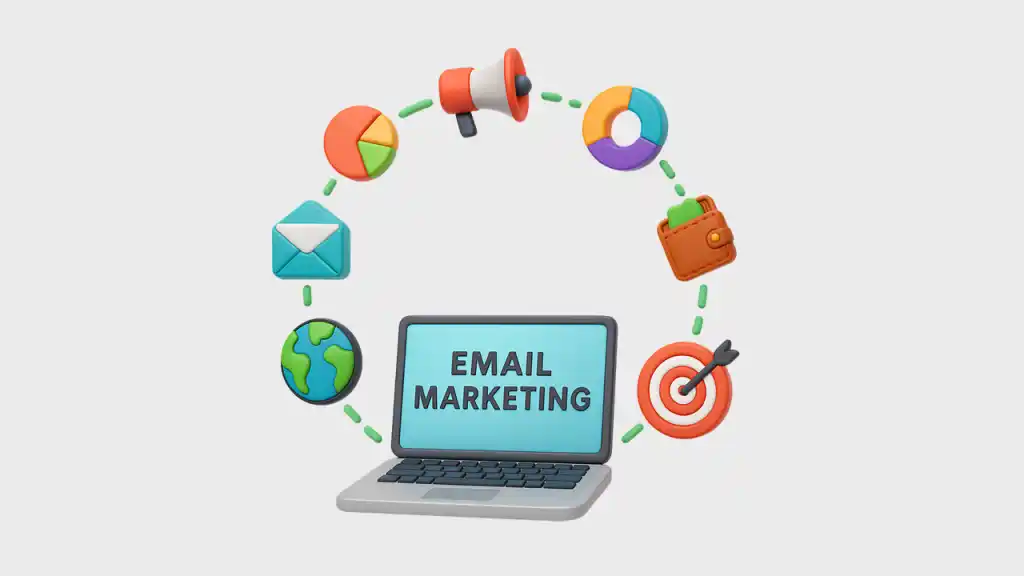
1. Refresh Your Message and Visuals Often
What worked last year might not work now. Audiences get used to seeing the same type of email marketing examples, so it’s important to change things up.
What to do:
- Update your design templates every few months. Try new layouts, colors, or fonts that reflect your current brand voice.
- Rewrite your email copy to focus on new offers or trends. Keep your message short and clear.
- Use new images or GIFs to make your email campaigns more visually appealing.
2. Re-Engage Inactive Subscribers
Every list has subscribers who stop opening your emails. That’s okay — the key is to bring them back. Re-engage inactive subscribers with friendly and relevant email marketing campaign examples.
What to do:
- Send a re-engagement email with a simple message like, “We miss you!”
- Offer a discount code or free resource to remind them why they signed up.
- Segment your target audience based on how long they’ve been inactive.
Why it matters:
- Win-back campaigns can recover up to 15% of inactive subscribers (ActiveCampaign).
- Reconnecting with existing customers is cheaper and more effective than finding new ones.
Pro Tip: Keep your subject line friendly and creative — something like “Still with us?” can make users curious enough to click.
3. Add Interactive and Visual Elements
Interactive content is one of the best ways to make your email marketing campaigns memorable. It helps readers spend more time engaging with your message instead of skimming.
What to add:
- Polls or quick surveys to collect customer feedback.
- Animated buttons or mini-quizzes to encourage clicks.
- Short product videos or carousels showing new services or updates.
Example: Nike often uses product GIFs and interactive sliders to showcase new arrivals — a great example of email marketing done right.
4. Reward and Surprise Loyal Customers
Keeping your loyal customers happy is the easiest way to build trust and long-term success. A small thank-you can make a big difference in how they view your brand.
What to do:
- Send exclusive discount codes or early access to new products.
- Create a simple rewards program where points can be earned for every purchase or referral.
- Use a promotional email to surprise your existing customers with bonus gifts or personalized offers.
- Share company updates or new services that make them feel like insiders.
Pro Tip: Add a fun or personal tone to your email copy. A simple “We appreciate you!” can feel warm and genuine.
5. Connect Emails to a Larger Strategy
Each email campaign should serve a bigger goal. Whether it’s increasing sales, driving traffic to your landing page, or growing new subscribers, every email needs a purpose.
How to do it:
- Align each message with your email marketing strategy — think of it as a roadmap guiding your audience.
- Use analytics to track click through rates and conversions.
- Link your email campaigns to blog posts, referral programs, or social media for a consistent brand experience.
- Maintain brand consistency in visuals, colors, and tone across every email template.
Top Tools for Automating Your Email Marketing
Top Indian Email Marketing Automation Tools
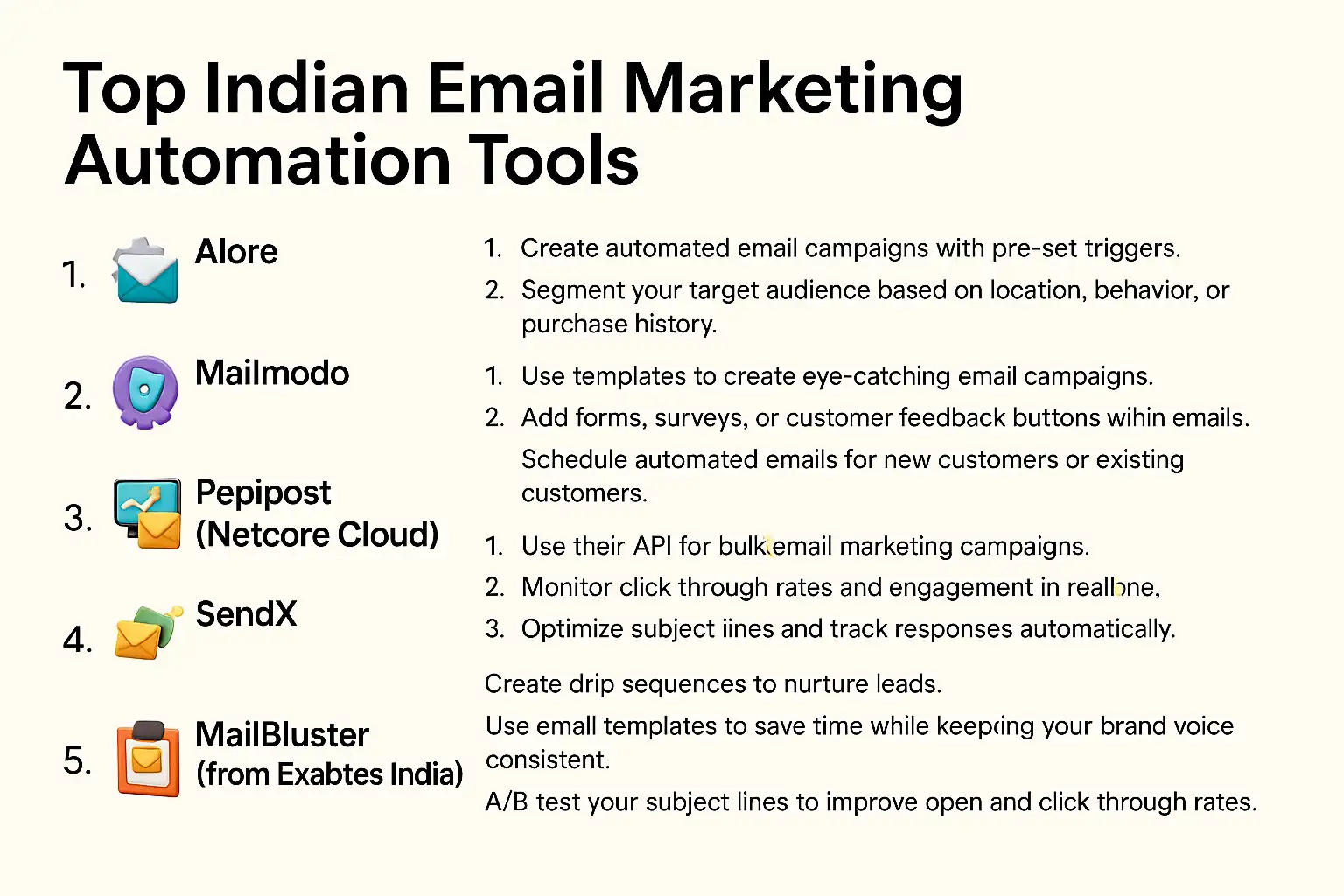
1. Alore
Alore is an all-in-one email marketing platform built for small and mid-sized businesses. It automates everything from sending follow up emails to tracking customer engagement.
How to use it:
- Create automated email campaigns with pre-set triggers.
- Segment your target audience based on location, behavior, or purchase history.
- Use built-in analytics to improve click through rates and conversions.
Why it’s great:
Alore helps brands maintain brand consistency and ensures your email marketing examples stay relevant to your audience.
2. Mailmodo
Mailmodo brings interactivity to your email marketing campaigns with AMP-powered emails. These allow users to fill forms or book demos directly inside the email.
How to use it:
- Use templates to create eye catching email campaigns.
- Add forms, surveys, or customer feedback buttons within emails.
- Schedule automated emails for new customers or existing customers.
Why it’s great:
It improves engagement by up to 3x compared to traditional email campaigns and supports better email marketing automation.
3. Pepipost (Netcore Cloud)
A reliable tool known for high deliverability and real-time analytics. Pepipost helps your emails avoid spam folders—a key for any effective email marketing campaign.
How to use it:
- Use their API for bulk email marketing campaign examples.
- Monitor click through rate and engagement in real time.
- Optimize subject lines and track responses automatically.
Why it’s great:
It offers great support for transactional and promotional emails, making it ideal for eCommerce businesses.
4. SendX
SendX focuses on user-friendly automation that helps marketers grow faster.
How to use it:
- Create drip sequences to nurture leads.
- Use email templates to save time while keeping your brand voice consistent.
- A/B test your subject lines to improve open and click through rates.
Why it’s great:
SendX provides cost-effective automation with powerful targeting for potential customers and inactive subscribers.
5. MailBluster (from Exabytes India)
MailBluster helps you manage large-scale email campaigns with simple tools and a clean dashboard.
How to use it:
- Schedule your email marketing campaigns with ease.
- Segment your audience for targeted campaigns.
- Review campaign reports to refine your email marketing strategy.
Why it’s great:
MailBluster is perfect for startups wanting to run a successful email marketing campaign without overspending.
Top Global Email Marketing Automation Tools
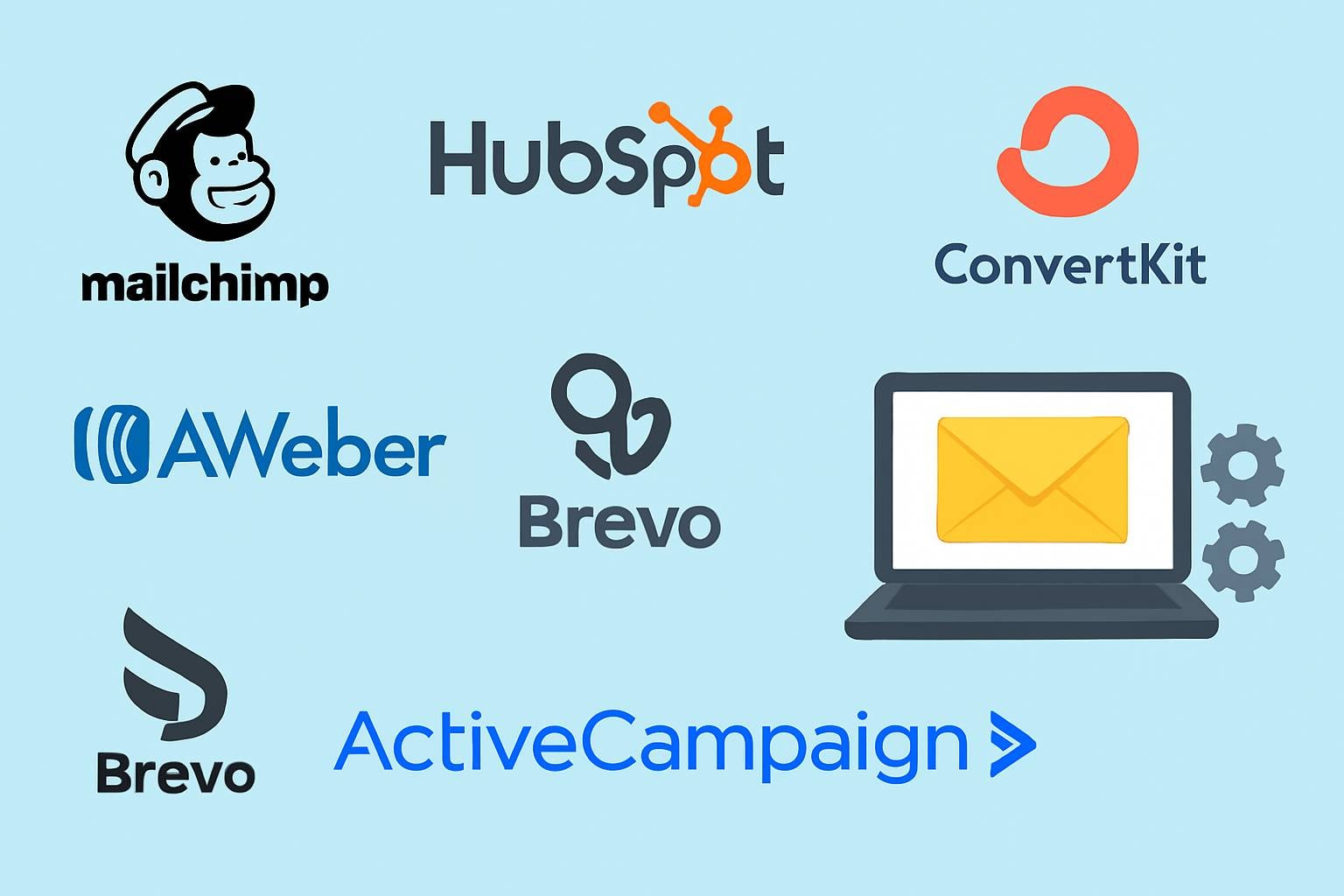
1. HubSpot
HubSpot is an all-in-one email marketing platform that helps you create, send, and track your email campaigns easily.
How to use it:
- Design personalized emails with its drag-and-drop editor.
- Segment your target audience based on behavior, location, or purchase history.
- Use reports to check your email marketing campaign examples and improve future results.
Why it’s great:
HubSpot connects your email marketing strategy with sales and CRM, giving you a full picture of every potential customer.
2. ActiveCampaign
ActiveCampaign is perfect for automating email marketing campaigns with smart triggers and sequences.
How to use it:
- Set up automated workflows to nurture leads.
- Send follow up emails after a customer signs up or buys.
- Track engagement through detailed analytics and click through rates.
Why it’s great:
It helps businesses re-engage inactive subscribers and build long-term relationships with existing customers.
3. Klaviyo
Klaviyo is known for its data-driven email marketing campaigns, especially for eCommerce brands.
How to use it:
- Sync customer data from your store to send targeted campaigns.
- Create automated emails like cart reminders or rewards program updates.
- Personalize offers based on a customer’s purchase history.
Why it’s great:
Klaviyo helps improve click through rate and boost loyalty by making each message feel truly personal.
4. Mailchimp
Mailchimp is one of the most popular tools for email marketing and automation worldwide.
How to use it:
- Choose from hundreds of email templates.
- Create eye catching email campaigns with images and product highlights.
- Analyze campaign performance and track customer feedback.
Why it’s great:
Mailchimp is beginner-friendly and ideal for small businesses trying their first example of email marketing.
5. Brevo (formerly Sendinblue)
Brevo is a complete email marketing automation tool built to manage both promotional emails and transactional ones.
How to use it:
- Schedule messages for the best delivery time.
- Use built-in A/B testing to find which subject line performs best.
- Segment users to send relevant and mobile friendly campaigns.
Why it’s great:
Brevo combines affordability with advanced automation, making it a favorite for global email marketing campaigns.
How to Choose the Right Email Automation Tool
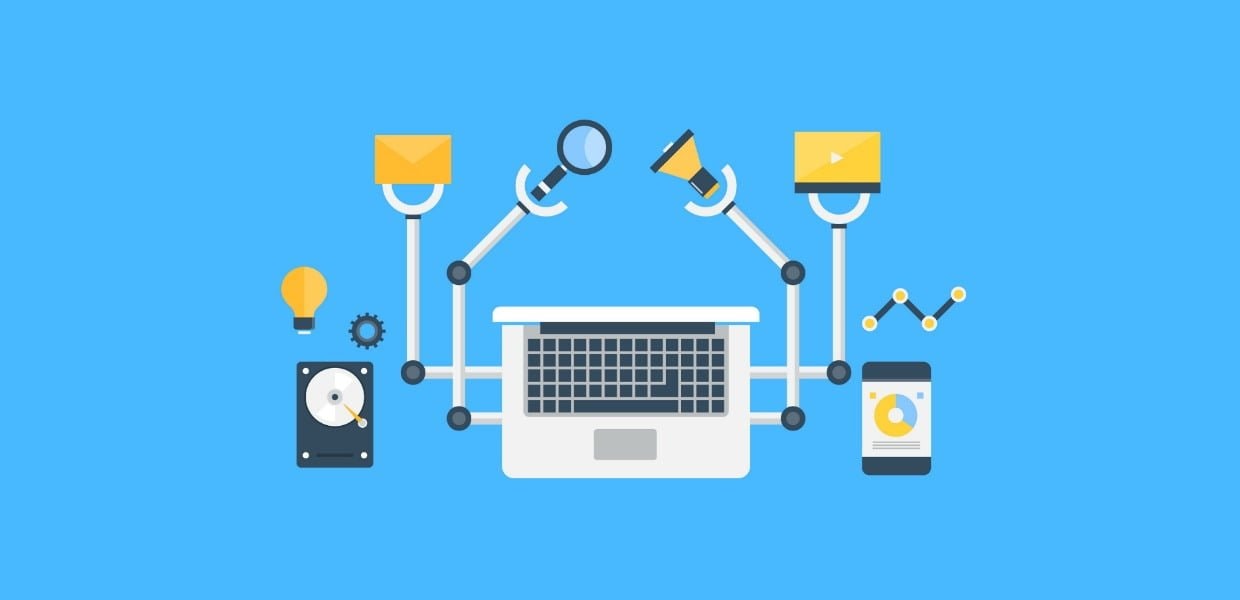
1. Define Your Email Marketing Goals
Start by asking, “What do I want my email marketing campaign to achieve?” Do you want more sales, better engagement, or to grow new subscribers?
- If your goal is to re engage inactive subscribers, choose a tool with strong segmentation and automation.
- For a successful email marketing campaign, make sure it supports personalized workflows.
- Set clear goals for open rates, click through rates, and conversions before picking a tool.
Having defined goals helps you match features to your email marketing strategy.
2. Evaluate Automation Depth and Customization
Not all tools offer the same level of automation. Look for options that let you:
- Send automated emails triggered by user actions like sign-ups or purchases.
- Customize your email templates and email copy to match your brand voice.
- Schedule promotional emails, welcome emails, and follow up emails automatically.
The more control you have, the easier it is to create effective email marketing campaigns that feel personal.
3. Check Integration Capabilities
Your automation tool should work well with other systems you use. Integration with your CRM, website, or analytics platform ensures that:
- Customer data like purchase history and preferences are used effectively.
- You can track each email campaign example alongside sales or traffic data.
- Reports connect your landing page activity with email marketing examples and real conversions.
Seamless connections create smarter, more powerful email marketing campaigns.
4. Compare Deliverability and Reporting
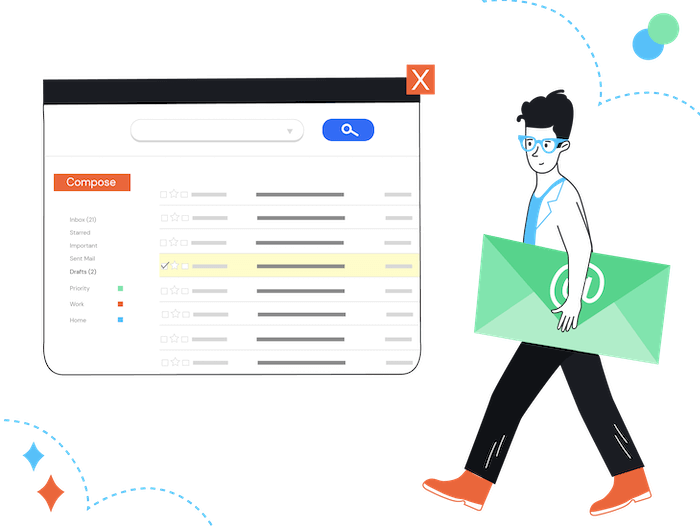
Even great email campaigns fail if they don’t reach the inbox. Look for tools with high deliverability rates and clear reporting dashboards.
- Track your click through rate and open rates easily.
- Use reports to improve your next example of email marketing.
- Review what worked for your existing customers and where you lost engagement.
As HubSpot notes, “Email marketing is still one of the most cost-effective channels — but only when performance is measured and refined.”
5. Prioritize Ease of Use and Support
If a tool feels confusing, you’ll probably stop using it. That’s why ease of use matters. Look for software that has:
- A clean dashboard for managing email campaigns and automated emails.
- Simple drag-and-drop email templates that even beginners can edit.
- Access to responsive customer support or tutorials when you get stuck.
As HubSpot reports, 43% of marketers say user-friendly tools help them send emails more consistently and maintain better engagement.
6. Balance Cost with Features
A lower price isn’t always the best deal. Compare pricing against what you truly need. When evaluating plans:
- Check if they include automation, analytics, and landing page tools.
- See if you can create personalized emails and measure click through rate easily.
- Make sure the tool allows free trials before paying for premium plans.
Think about scalability—cheap tools can become expensive when your email subscriber list grows.
7. Ensure Scalability for Future Growth
Your email marketing campaign needs room to grow. Choose a platform that supports:
- Unlimited contact storage as you attract new subscribers and existing customers.
- Advanced segmentation to re engage inactive subscribers later.
- Flexible email templates to match evolving brand styles.
The right tool grows with you, helping you launch every new successful email marketing campaign with ease.
8. Review Security and Compliance
Protecting your email subscribers’ data is a must. Always pick tools that follow strict security rules like GDPR or CAN-SPAM.
Look for:
- Encrypted systems to safeguard personal data and purchase history.
- Transparent policies about how user data is stored and used.
- Easy opt-out options for potential customers who no longer want updates.
Security builds trust. When subscribers feel safe, your email marketing campaigns perform better and drive more sales.
Conclusion
The right example of email marketing can turn simple messages into real business results. Whether you’re running a promotional email campaign or sharing a new blog post, what matters most is relevance and timing. Every brand, big or small, can use content marketing and automation tools to reach the right people at the right moment.
Don’t forget to create effective email campaigns that focus on your readers’ needs and email preferences. Test different subject lines, track results, and learn from the best examples to inspire your next send.
If you’re new, explore easy-to-use email platforms, start small, and offer free trials to attract your first customers. Smart testing, engaging blog content, and consistent effort make every campaign better. Stay creative, keep improving, and your next email marketing example could be the one others learn from.

